Lister Junior celebrates its 100th anniversary!
Posted by Chris Graham on 14th July 2023
Charles Craig celebrates the 100th anniversary of a forgotten pioneer of the stationary engine world, the Lister Junior.
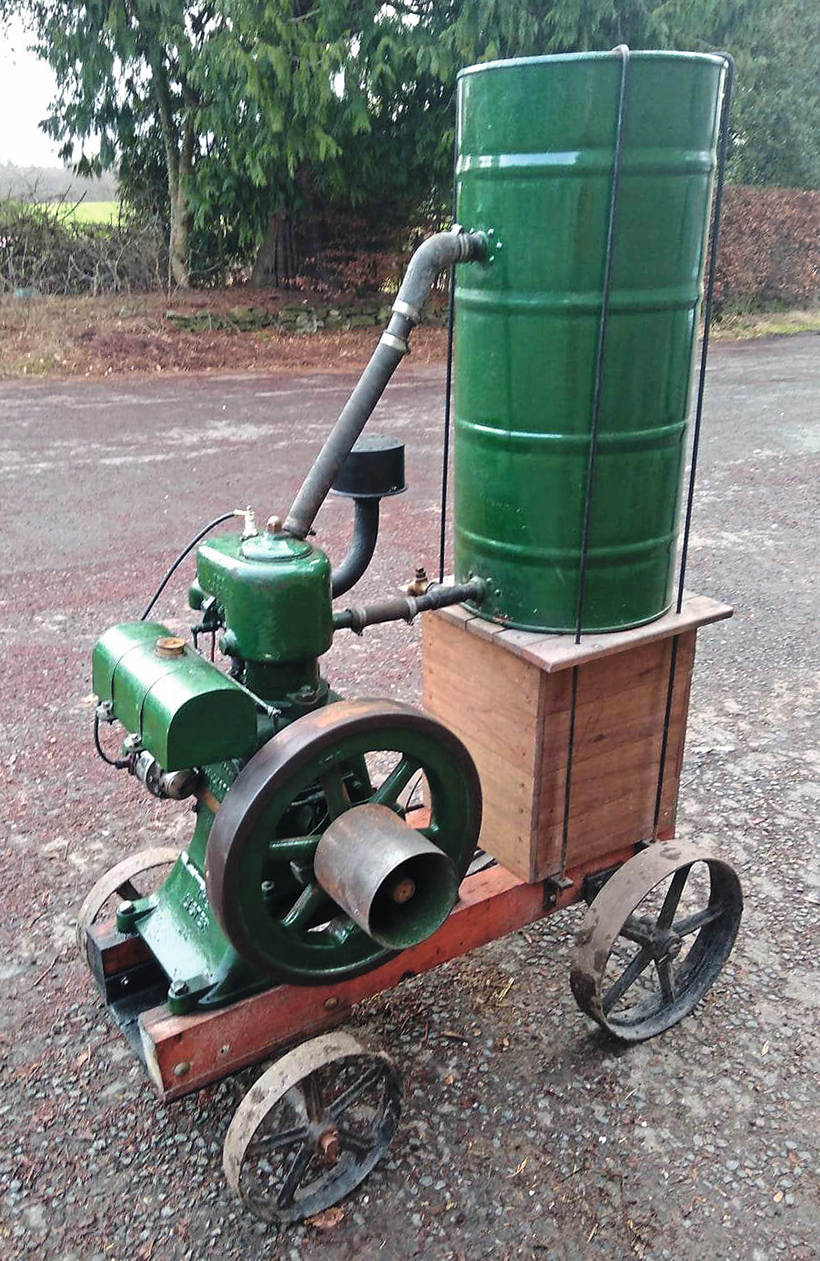
This A type is the oldest ‘tank-cooled’ engine known. Supplied to agents Upfield & Sons of Catsfield, East Sussex, in October 1923; it now resides a long way north in Perth, Scotland. (Pic: Allan Grieve, engine owner)
Over the past few years, perhaps driven by that champion of all things Lister and founder of this magazine, the late David Edgington, we’ve seen a series of events marking various anniversaries. This year, 2023, is the 100th anniversary of the Lister A & B type, an often-overlooked model; lets take a look at this remarkably long-lived example of robust simplicity.

The prototype A type as shown to the press and public at various events over the summer of 1923. (Illustration courtesy of Doreen Edgington)
Background
RA Lister & Co entered the internal combustion engine arena in 1909 with its new ‘Petrol Engine’, available in a range of sizes and primarily aimed at the agricultural market. This engine, developed from the imported Southwell with a bit of UK influence, became a popular range with both farm and industrial users. However, by the 1920s, designs had progressed and it was clear that the H to R range of engines needed to be updated. A start was made with an update of the most popular sizes in 1921, this however appears to have been not entirely successful.
About this time, a young freelance engineer was looking for work and was accepted by Lister as a member of the design team, namely one Arthur Freeman-Sanders. How much or if any of the initial 1921 update was Arthur’s input is unknown, but I suspect the 1922 re-working to spec 75 was largely down to Freeman-Sanders. With this success under his belt, it appears Arthur was offered the job of chief development engineer and no doubt the remit to produce a new ‘cheaper’ alternative to the smaller Listers.
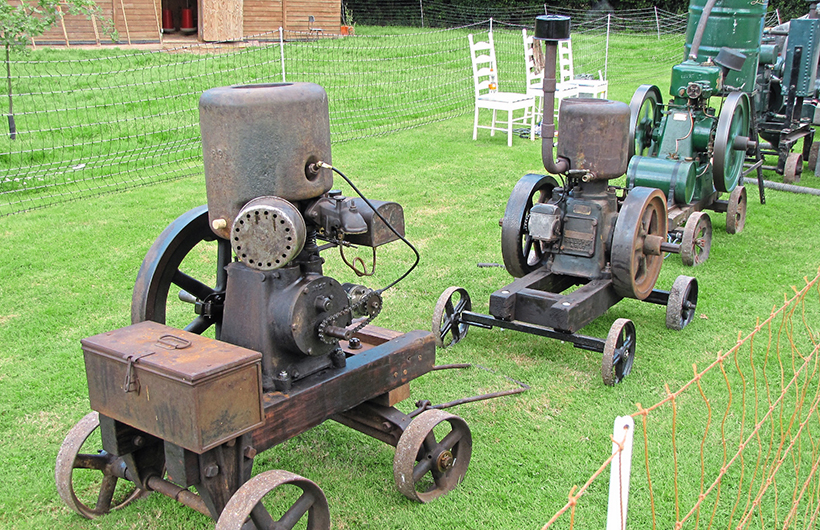
A nice comparison between single-flywheel, twin-flywheel and Bruston flywheel derivatives, seen at the late Paul Cook’s museum.
Prototype
As a newcomer to the design world of engines, Freeman-Sanders must have felt a lot of pressure for making a success of this new engine. Despite having had an apprenticeship with the Bristol Tramways dept, and having spent six years in the artillery during WW1, no doubt coming up against the new tanks employed, Arthur had precious little practical design experience. Whether the idea came from a director or simply from studying various trade journals, an engine design of similar characteristics presents itself to us; that is the London or Novo engine from Canada and the USA, respectively.
I’m inclined to go with the London, as Lister had good trading connections with Canada and London engines had been imported to the UK. Perhaps with this outline pinned to his desk, a design was drawn up for a compact side-valve vertical engine, with just a single flywheel. The most novel feature with regards to Lister was the hopper-cooling. Although Listers had sold hopper-cooled engines before, mostly to special order for Canada, no mass-market Lister had used such cooling before; tank-cooled versions were also offered. The features that no doubt impressed the bean counters were; small crankcase with a separate optional sub-base if required to lift the flywheels clear of the ground, single cam camshaft geared directly to the crank, no pump of any description, smaller fuel tank connected directly to the engine and direct-drive magneto. This last point is worthy of further discussion, and perhaps gives credence to the design falling at Freeman-Sanders feet.
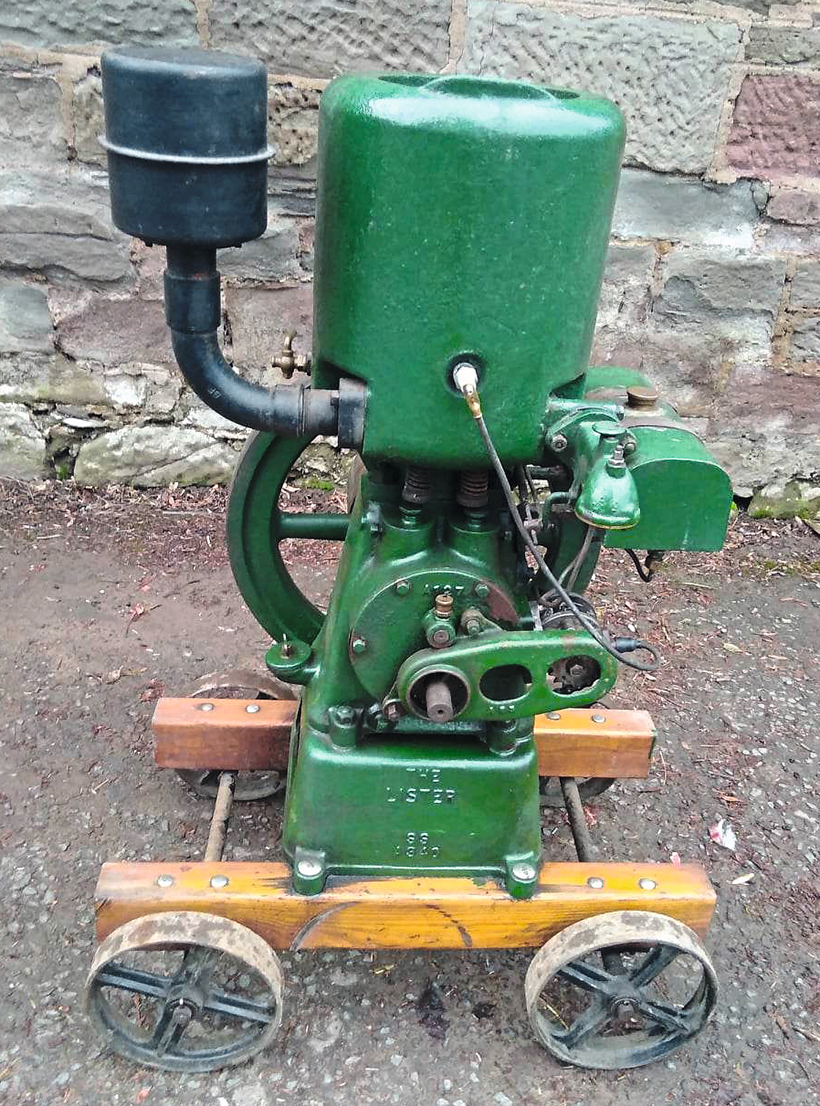
BI type ( ‘I’ for Industrial?), spec 17c; another of Allan Grieve’s collection clearly illustrates the reversion to single flywheel for these budget ‘contract’ engines. (Pic: Allan Grieve)
It’s noted in the only surviving illustration of the prototype engine built in June 1923, that the magneto is shown direct-driven off the end of the crankshaft; this feature was to reappear in Arthur’s next design – the Lister D type – so can we assume that he perhaps had a dislike of chain-driven magnetos? Another feature set to reappear in later designs is the ring-oiled main bearings, albeit this was with a different manufacturer! The most salient feature of the new engine was to assist the serviceability and this was the valve chambers or ‘cages’ that could easily be removed for cleaning and grinding-in the valves. The last is one point often overlooked… speed; at 600rpm the A and B types were the fastest rotating mainstream engines produced thus far, although ‘high speed’ derivatives of the H to R range existed before, and showed the direction in which the design was heading.

This pair of engines, seen at the Rural Life Museum in Tilford, Surrey, neatly show the differences between Industrial and Standard engines and tank- and hopper-cooling although, in this instance, we see the rare addition of a radiator.
The A and B type enter production
With the design accepted and patterns made, the A/B type was launched to the public in August 1923, with the first few sales all going to recognised Lister agents. A late change was the altering to chain-drive of the magneto and the first few engines required a special spacer to fit the ML magneto; these engines being made to specification 10 or 50 for tank-cooled varieties.
Another quick design change was the breather which, within the first 100 engines, saw the crankshaft aperture enlarged on the crankcase and a ‘sunray style’ cover plate fitted. In quick succession, specs 11, 12 and 13 followed in 1924 and then finally spec 14, which brought much improvement and the new name ‘Junior’. However, one basic flaw remained and that was the single flywheel. Had a balanced crank been used, it no doubt would have been no problem but, with an external balance weight, the engine suffered from a twisting shake and it’s said that arch rivals Petters Ltd was quick to seize upon this unfortunate trait and extol the virtues of the smoothness of its ‘twin flywheel’ engines! So, in 1925 at spec 15, a redesigned crankcase with two new flywheels was added to make the engine run more smoothly. A new pump-fed carburettor was added of similar design to the original H-R engines, thus ensuring fuel mixture remained constant once set.
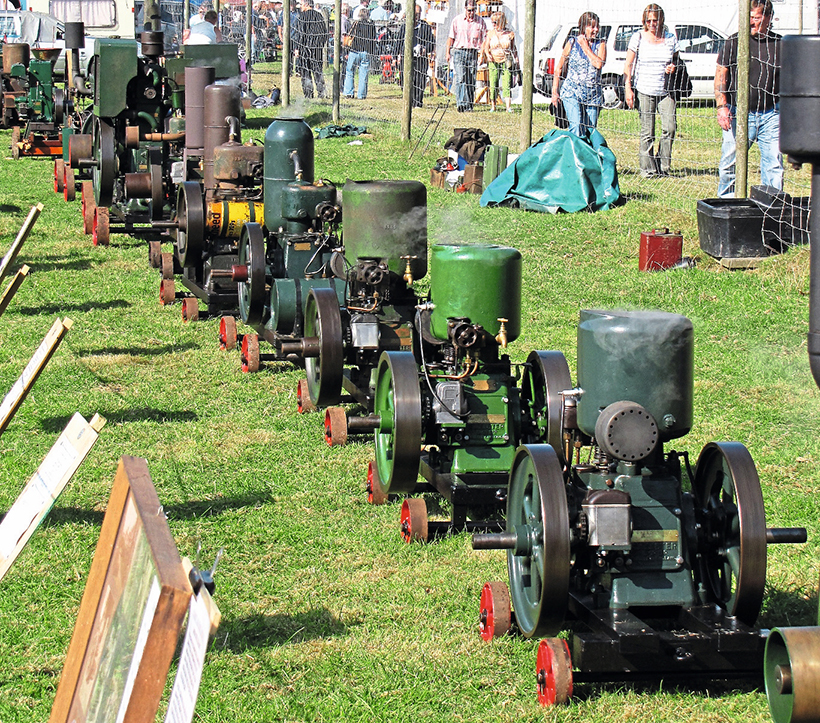
A superb line-up of Lister ‘Junior’ engines seen at the Lister Centenary Display in 2009. Will we see a repeat line-up somewhere this year?
Design tweaks
In 1926, no doubt to offset some of the extra costs of fitting fuel pumps and twin-flywheels, the cylinder was redesigned to do away with the valve cages and build-in the valve chest, with removable brass plugs to allow access for valve maintenance. Some ‘contract’ engines were produced in the late ’20s to the old pattern single-flywheel design, creating an odd ‘misfit’ design. By this time too, industrial customers wanted higher power and, as well as increasing operating speed, heavy ‘industrial’ spec flywheels were added. A new requirement on direct-drive Bruston generating sets saw the need for the A type to produce 3hp without any increase in speed, therefore all A types from 1932 onwards had an enlarged capacity of 900cc by increasing bore size to four inches.

A nicely-restored 1926 spec 15 engine clearly showing the two flywheels, but retaining the caged valves. Some would say it’s the best A type made. (Pic: Eric Brain)
This saw the ‘Junior’ range remain much the same through the 1940s, when many engines were supplied under wartime contracts, and construction moved out of the Dursley site to satellite factories. For special MOD work, a revised hopper with lid and a flame trap for the carburettor were added to the options list. Engine production continued steadily for most of the ’50s, with new TVO kits available to burn the cheaper tractor fuel, then in widespread use. By the 1960s, the design was somewhat antiquated but still found a niche with customers wanting a simple, no frills, power-plant. However, the much-cheaper-to-run ‘high speed’ diesel engine was the way to go, with air-cooling, it needed minimal operational intervention and duly in 1963 the last B type rolled off the production line, thus ending 40 years of Arthur Freeman-Sanders’ pioneering engine design.
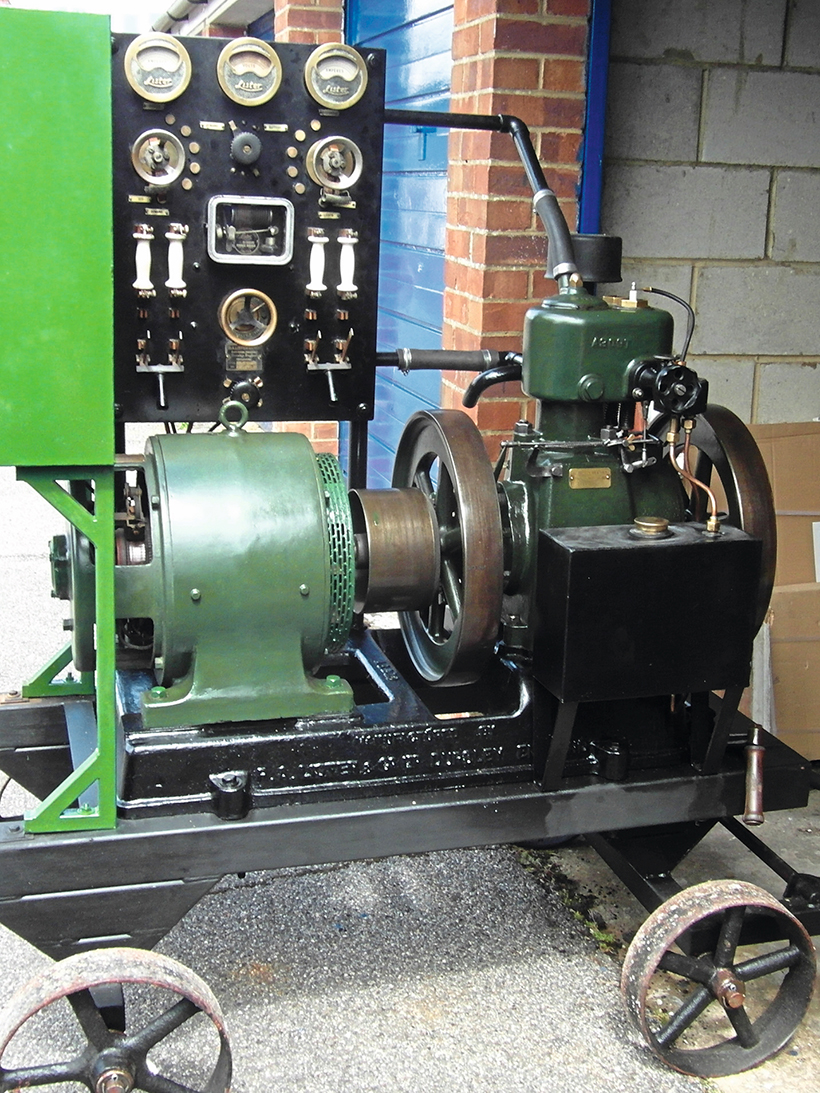
This Bruston direct-coupled generating set dates from 1926, and powered a wayside garage in the North West. (Pic: John Peters)
Today
The Lister Junior has always been a popular engine for enthusiasts, and often holds second place to that pinnacle of Freeman-Sanders petrol engines, the D type; many a collection starts with a D type and progresses to an A or B. So perhaps its time for the Junior to shine and make 2023 a great homage to this pioneer? Let’s look forward to seeing many displays across the UK and beyond! Happy centenary, Lister Junior!
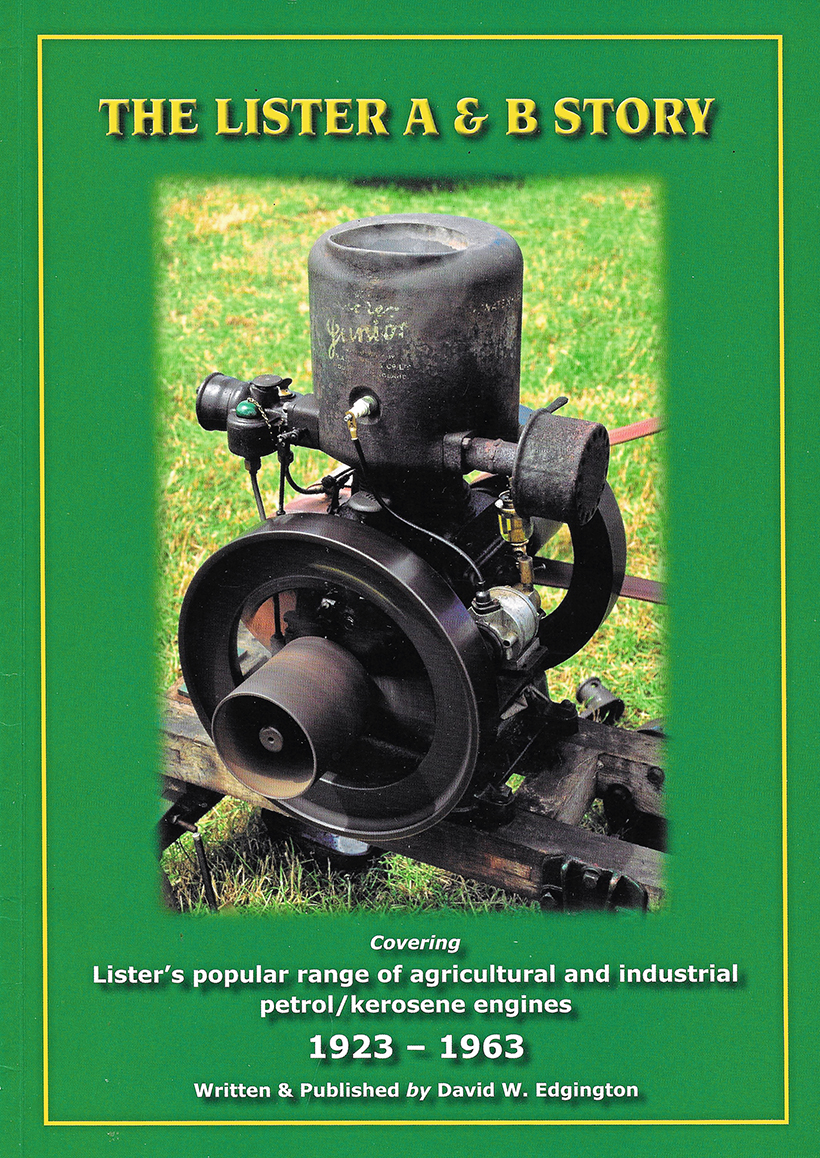
The front cover of David Edgington’s The Lister A & B type Story.
Footnotes
Allan Grieve has confirmed that a display of A & B types will be organised by the Scottish Vintage Tractor & Engine Club at Balboughty Farm, Scone, PH2 6AA on October 17th.
For more information on Lister A & B types, Doreen Edgington still has copies available of David Edgington’s The Lister A & B Type Story.
This feature comes from a recent issue of Stationary Engine, and you can get a money-saving subscription to this magazine simply by clicking HERE
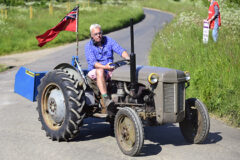
Previous Post
Chiltern Vintage Tractor Charity Run was a right royal success!

Next Post
Morris J-Type GPO van enjoys new lease of life!



